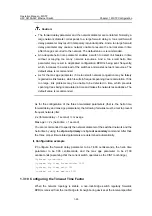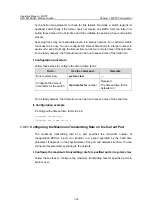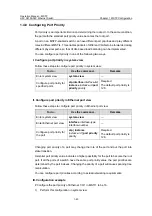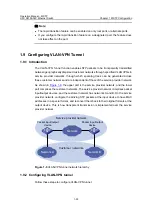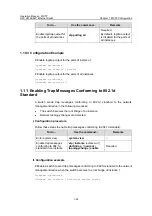
Operation Manual – MSTP
H3C S3100-52P Ethernet Switch
Chapter 1 MSTP Configuration
1-40
1.4.8 Configuring Port Priority
Port priority is an important criterion on determining the root port. In the same condition,
the port with the smallest port priority value becomes the root port.
A port on an MSTP-enabled switch can have different port priorities and play different
roles in different MSTIs. This enables packets of different VLANs to be forwarded along
different physical paths, so that VLAN-based load balancing can be implemented.
You can configure port priority in one of the following two ways.
I. Configure port priority in system view
Follow these steps to configure port priority in system view:
To do...
Use the command...
Remarks
Enter system view
system-view
—
Configure port priority for
specified ports
stp interface
interface-list
instance
instance-id
port
priority priority
Required
The default port priority is
128.
II. Configure port priority in Ethernet port view
Follow these steps to configure port priority in Ethernet port view:
To do...
Use the command...
Remarks
Enter system view
system-view
—
Enter Ethernet port view
interface
interface-type
interface-number
—
Configure port priority for
the port
stp
[
instance
instance-id
]
port priority
priority
Required.
The default port priority is
128.
Changing port priority of a port may change the role of the port and put the port into
state transition.
A smaller port priority value indicates a higher possibility for the port to become the root
port. If all the ports of a switch have the same port priority value, the port priorities are
determined by the port indexes. Changing the priority of a port will cause spanning tree
recalculation.
You can configure port priorities according to actual networking requirements.
III. Configuration example
# Configure the port priority of Ethernet 1/0/1 in MSTI 1 to be 16.
1) Perform this configuration in system view




